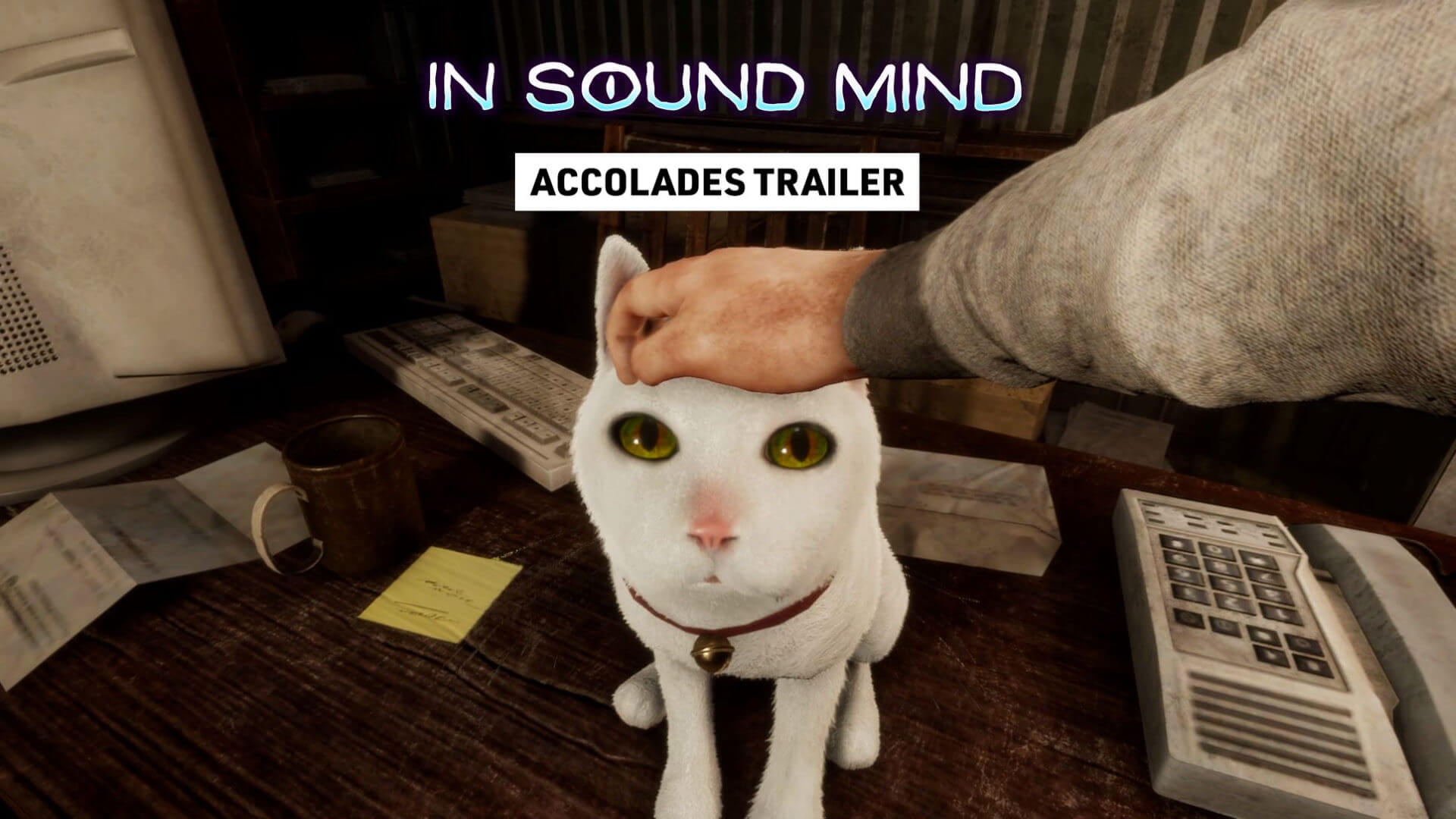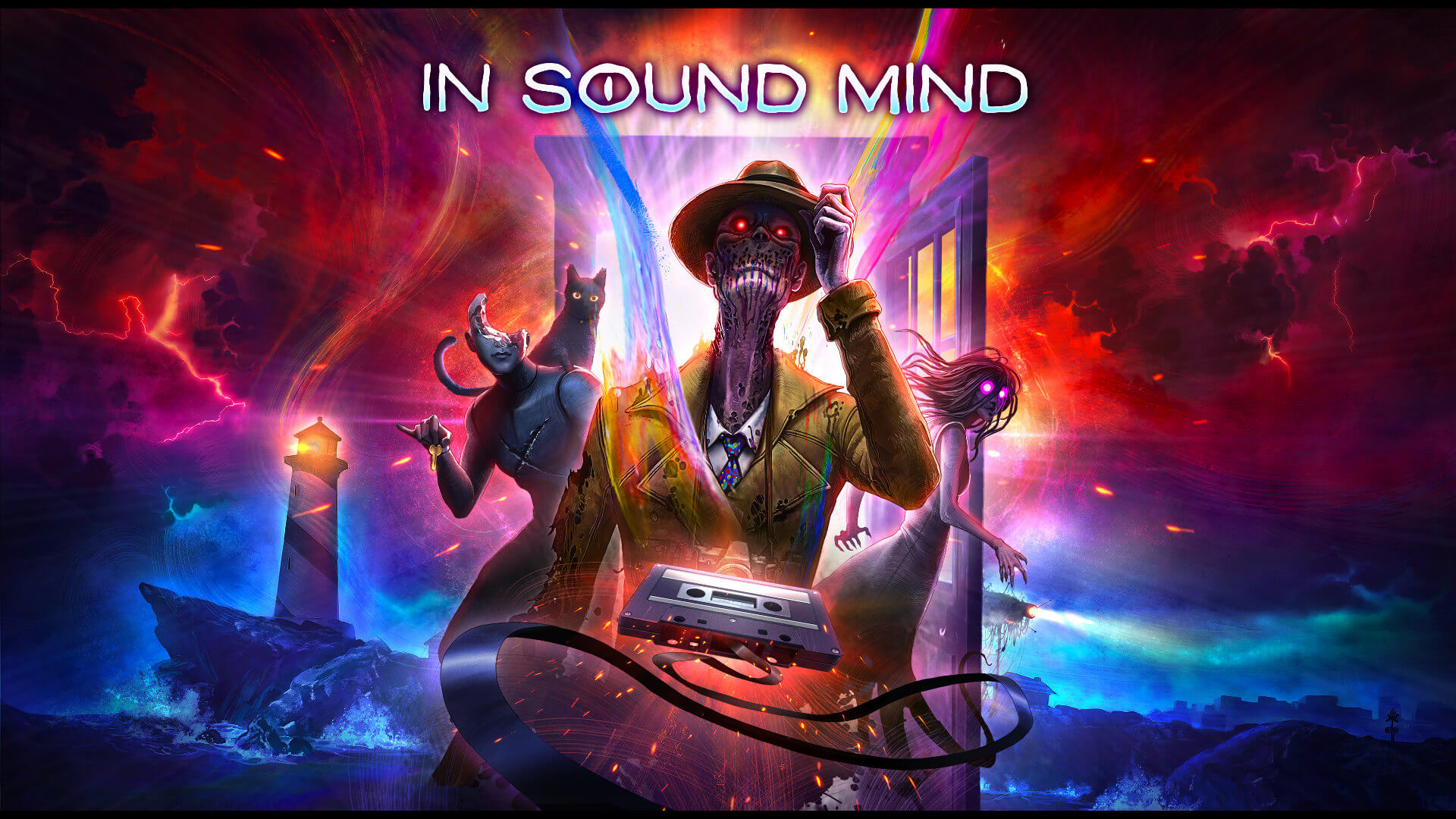
In Sound Mind Review – No One Can Stop Me from Calling this a Metroidvania
Developed by We Create Stuff
Published by Modus Games
Available on PC, Nintendo Switch, Xbox Series X and Series S, PlayStation 5
MSRP $34.99
I should probably warn you ahead of time. Before I start in with the pithy jokes and goofy non-sequiturs. In Sound Mind is a heavy game. It deals with themes of mental health. If any of that bothers you, don’t read this. I hate to push people away from the things I write, but as someone who lives with mental illness, I understand how In Sound Mind‘s themes could affect people. That being said, we can now move into the goofy jokes section, followed by some earnest introspection on the role games play in our mental health…or something like that.
In Sound Mind was on the tip of everyone’s tongues moving into the spooky season. Made by a talented mod team, hooked up with The Living Tombstone, it was looking to change how we interact with horror games. I must admit, my first hour or so of In Sound Mind wasn’t great. It seemed like the bog-standard walking simulator. I was exploring around an old apartment complex and solving puzzles. It wasn’t hitting me well. I talked to DreadXP Head of Production Ted Hentschke, who told me to stick with it. I’m glad I did.

In Sound Mind tells the story of a man trapped in a kind of between-place. He has access to his apartment, but strangely, there’s something…odd, happening with his building. Actually, it’s something wrong with the entire town he lives in. In his work as a therapist, he saw a varied array of patients. Due to some temporal strangeness, he can now access their apartments from within his building. The apartment building acts as a hub world. I mentioned in the title that I’m going to call In Sound Mind a metroidvania, and I will now explain my reasoning: In the apartment building hub, there will be areas blocked off that you need special items to access. These items are gained through playing tapes.
Tapes are In Sound Mind‘s version of levels. You, as the player, must collect recordings of therapy sessions and play them back in your office, opening doorways to your patient’s minds. Entering a tape for the first time, you need to make your way towards a secondary doorway that places you in their actual mindscape. On the way, you’ll find recordings of their sessions, where you can listen to the player character talk with them through therapy. I don’t want to spoil anything too badly, but I will say that these tapes usually show these patients’ ATL, or all time low. These tapes show off the fantastic writing of In Sound Mind. You dislike these people initially. They’re too angry, too sad. They just carry too much baggage.

When you arrive in their mindscape proper, you’ll notice that it is designed around their conditions. A brief spoiler. Seriously, I’m going to spoil the first tape. Move down a couple of paragraphs. You enter the mindscape of Virginia, which is a retail store. Moving through the store will give you a bit of a story around Virginia, kept intentionally vague. That’s what In Sound Mind does best. It drops tantalizing clues as to the story of the people whose mind you are rooting around in, but never give up the full picture until you complete their tape. All you know is that Virginia can’t stand seeing herself after an accident as a child.
I struggled through Virginia’s tape. I just wasn’t grabbed yet. I wandered the supermarket, solving puzzles and engaging in surprisingly solid combat. It was when I got to the end of Virginia’s tape that the game got me. You have a boss fight with Virginia. It’s been hinted that she hates her appearance due to an accident. You use a series of mirrors throughout the store to trick her into smashing into them. Once defeated, she’ll sulk off to a corner where you can find her, crying. The main character reassures her, and she shows her face. She then disappears into a smattering of gold light.

In Sound Mind doesn’t have “bad guys” in the traditional sense. Each tape has a central “boss”, that is just a patient. Someone whose condition got the better of them. Left unfettered in their mindscapes, they’ve become twisted and set in their self-destructive cycles. That’s where you come in. You are the sympathetic ear. These “bosses” just want a bit of reassurance. They want that helping hand because things have gotten worse. You give that to them. I can’t explain how impactful it is to see mentally ill characters be extended sympathy and understanding. They are initially portrayed as monsters, but by the time you’re finished with the first tape, you have a much better idea of what you’re doing in the game.
Using mental illness as a shorthand for scary or wrong is done so much these days. While it at first seemed like this would be the route In Sound Mind was going down, I’m happy to say it absolutely is not. If anything, the presuppositions of the player contain more malice than what is intended throughout the game.
On your way out of the tape, you’ll find more recordings of your session with the tape’s subject. These usually provide closure, now that everything is said and done. The way that these characters are handled in each tape is up for you to find. I thoroughly enjoyed each one more than the last. Well, except the third tape. It isn’t a story issue, but a mechanical issue. I feel that by the third tape, the runtime gets padded just a bit. I get it, but it can become mildly frustrating. I still saw it through, chiefly to experience more of the absolutely terrific writing.

In the course of the tapes, you’ll come across new items to help you in the hub apartments. In the first tape, you’ll get a piece of glass, sharp as a knife. It can be used to cut through caution tape. If you hold it up, you can look through it to see ephemeral clues scattered throughout the world. Each new upgrade that you get is helpful in the hub world, on top of being helpful throughout the rest of the tapes. These are not gimmick items, used once for a tape and then never brought out of your inventory again. They provide lasting benefits.
The gunplay is satisfying, and the number of weapons actually surprised me. I thought I was just stuck with the pistol until somewhere after the second tape I started finding other weapons, never mind the awesome weapon/utility item the second tape gave me. Gunfights are usually reserved for “ink blots”; the gross, shadowy monsters that inhabit the tapes of your patient’s. They do not have complex motives. They’re just fodder. Shoot them so they’ll get out of the way of the story you’re trying to enjoy.

After a rocky start, I found In Sound Mind to be…affirming. That’s an odd thing to call a horror game. It feels far more bittersweet than scary. There are of course excellent moments of horror. A few mannequins that move when you’re not looking in the first tape come to mind. Every scary moment is balanced out with a bit of sad. From a beauty queen that can’t look at herself, to a man so afraid of the dark he has to work at a lighthouse, In Sound Mind contains multitudes. If I were to give you any advice, it’s this: Go in with an open mind.




